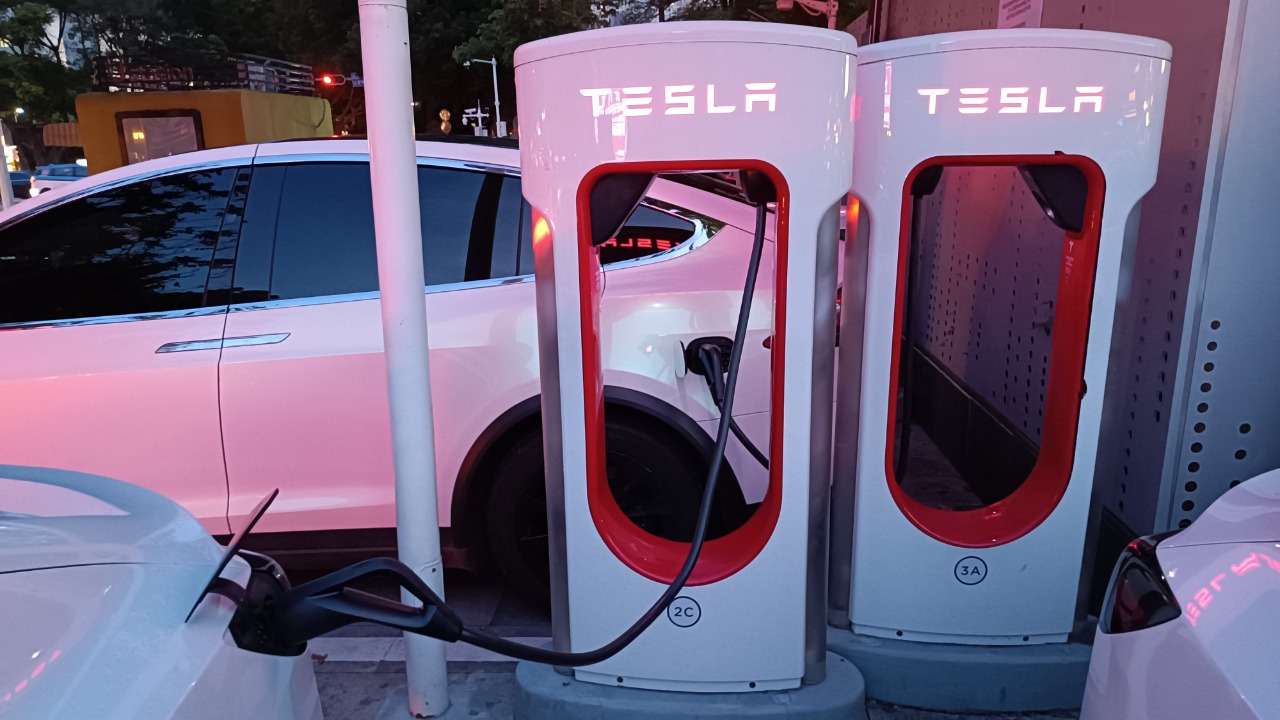
Tesla’s Supercharger network has experienced remarkable growth in the third quarter, adding more stations than the next nine competing networks combined. This significant milestone underscores Tesla’s dominance in the electric vehicle (EV) charging infrastructure. The surge in deployment, as detailed in recent analysis, highlights Tesla’s strategic efforts to outpace rivals such as Electrify America, EVgo, and ChargePoint. This expansion is a testament to Tesla’s commitment to enhancing fast-charging options amid the increasing adoption of electric vehicles.
Tesla’s Q3 Supercharger Deployment
In the third quarter, Tesla installed an impressive number of Superchargers, far exceeding the contributions of its major competitors. This achievement is not just about quantity; it also reflects strategic placement. Tesla focused on key highway corridors and urban hubs, significantly improving coverage and accessibility for EV drivers. The timeline of these installations marks Q3 as a pivotal period for Tesla’s network scaling, as evidenced by deployment data. This strategic expansion aims to meet the growing demand for reliable and fast charging options, positioning Tesla as a leader in the EV charging landscape.
The strategic locations of these new Superchargers are crucial. By targeting high-traffic areas and urban centers, Tesla ensures that its network can support the increasing number of EVs on the road. This approach not only enhances convenience for Tesla owners but also attracts non-Tesla EV drivers, who can now access the network. The rapid deployment during Q3 highlights Tesla’s ability to execute its expansion plans effectively, reinforcing its commitment to providing comprehensive charging solutions.
Comparison with Competing Networks
When comparing Tesla’s Q3 Supercharger additions to those of the next nine networks, the disparity is striking. Tesla’s total installations surpass the combined efforts of competitors like Electrify America and EVgo. This significant gap underscores Tesla’s market dominance in the Supercharger rollout. Analyzing the growth rates of these networks reveals that no single rival matched even a fraction of Tesla’s Q3 additions. This data highlights the competitive advantage Tesla holds in the EV charging sector, as it continues to expand its network at an unprecedented pace.
The gap between Tesla and its competitors is not just a matter of numbers; it reflects a broader trend in the EV charging industry. Tesla’s aggressive expansion strategy sets a high bar for other networks, challenging them to keep up with the rapid pace of development. This competitive landscape pushes all players to innovate and improve their offerings, ultimately benefiting EV drivers with more reliable and accessible charging options. As Tesla continues to widen the gap, the pressure mounts on other networks to enhance their infrastructure and services.
Impact on EV Charging Landscape
Tesla’s Q3 Supercharger additions have a profound impact on the EV charging landscape. By opening its network to non-Tesla EVs, Tesla enhances accessibility and convenience for a broader range of drivers. This move not only increases the utilization of Tesla’s infrastructure but also sets a precedent for interoperability in the industry. As more EVs hit the road, the need for reliable and widespread charging options becomes increasingly critical. Tesla’s expansion addresses this demand, reducing wait times and improving charging reliability for all EV users.
The broader effects of Tesla’s Supercharger growth extend beyond immediate accessibility. As the network expands, it contributes to the overall reliability of the charging infrastructure, reducing congestion and wait times at charging stations. This improvement in service quality is crucial for encouraging more consumers to transition to electric vehicles. Furthermore, Tesla’s leadership in network expansion sets a benchmark for other companies, driving the industry towards greater efficiency and customer satisfaction. The trends observed in Q3 suggest that Tesla’s lead in the charging sector is likely to continue, influencing the future landscape of EV charging.
Strategic Drivers Behind the Expansion
Several strategic factors have driven Tesla’s Q3 Supercharger expansion. Significant investments in manufacturing and site acquisition have enabled this rapid growth. Tesla’s commitment to scaling its network is supported by substantial financial resources and a clear vision for the future of EV charging. Additionally, policy and partnership influences, such as government incentives, have accelerated deployments. These external factors play a crucial role in facilitating Tesla’s ambitious expansion plans, allowing the company to maintain its competitive edge in the market.
Executive statements and internal goals also highlight the strategic drivers behind Tesla’s Supercharger scaling. The company’s leadership has consistently emphasized the importance of expanding the charging network to support the growing EV market. This focus on infrastructure development aligns with Tesla’s broader mission to accelerate the world’s transition to sustainable energy. By prioritizing Supercharger deployment, Tesla not only enhances its service offerings but also strengthens its position as a leader in the EV industry. The achievements in Q3 reflect Tesla’s dedication to achieving these goals and setting new standards for the future of electric mobility.
Overall, Tesla’s Q3 Supercharger deployment marks a significant milestone in the company’s journey to revolutionize the EV charging landscape. By outpacing competitors and expanding its network strategically, Tesla continues to lead the charge towards a more sustainable and accessible future for electric vehicles. As the industry evolves, Tesla’s commitment to innovation and infrastructure development will remain a driving force in shaping the future of transportation.